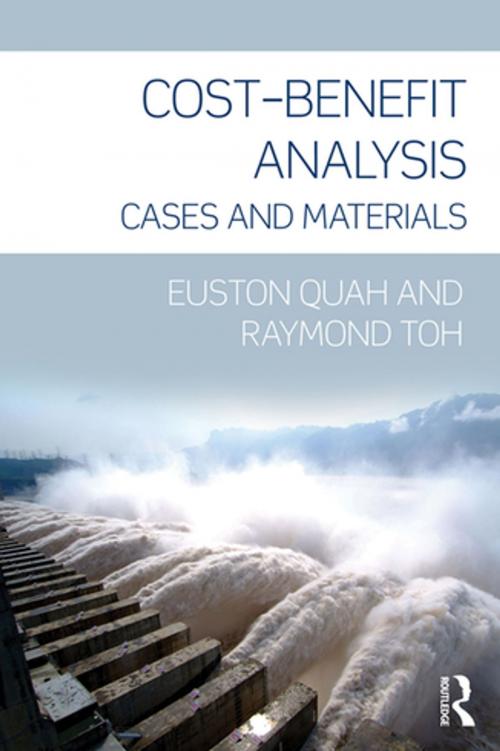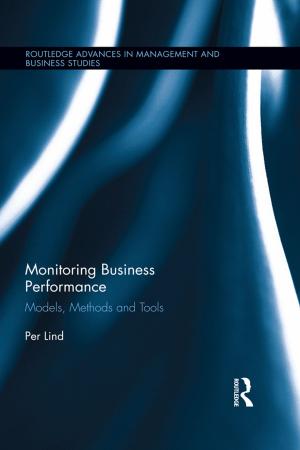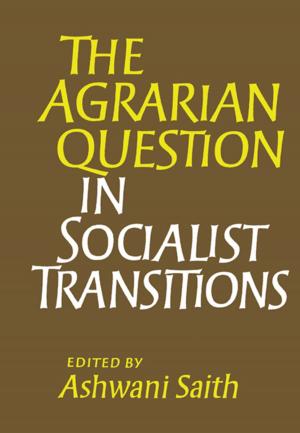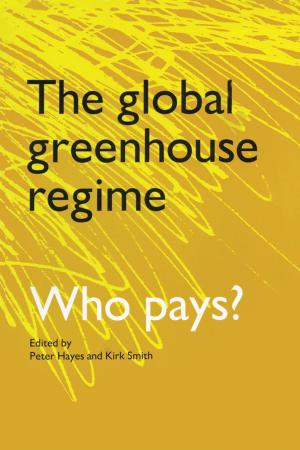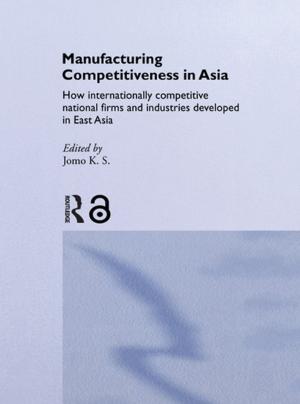Cost-Benefit Analysis
Cases and Materials
Business & Finance, Business Reference, Infrastructure, Management & Leadership, Decision Making & Problem Solving| Author: | Euston Quah, Raymond Toh | ISBN: | 9781136621192 |
| Publisher: | Taylor and Francis | Publication: | October 20, 2011 |
| Imprint: | Routledge | Language: | English |
| Author: | Euston Quah, Raymond Toh |
| ISBN: | 9781136621192 |
| Publisher: | Taylor and Francis |
| Publication: | October 20, 2011 |
| Imprint: | Routledge |
| Language: | English |
Cost-benefit analysis (CBA) is the systematic and analytical process of comparing benefits and costs in evaluating the desirability of a project or programme, often of a social nature and for society as a whole. CBA is fundamental to government decision-making and can be an effective tool for informed decisions on the use of society's scarce resources. This book highlights the main concepts and principles of cost-benefit analysis used in real life cases and actual applications. The book contains rich cases, materials and examples of real life CBA applications with emphasis both on physical and non-physical projects and infrastructure developments in Asia and beyond. The book also discusses techniques frequently used in applied CBA.
The first part of the book introduces the key concepts and principles of CBA before Part Two covers some pertinent issues relating to CBA, such as the recent trend of using behavioural economics and frequently used techniques in applied CBA. Finally, in Part Three, case studies are written up to illustrate how CBA is done, and questions for the readers and students to ponder are raised at the end of each chapter.
The scope of the case studies is more than just physical infrastructures but will include public sector policies and programmes covering a host of social policies as in health, education, social welfare programmes, and the environment. For each case, there will be illustrations of the key concepts and principles of CBA used. Undertakings analyzed include:
- the Three Gorges Dam in China
- the 2008 Beijing Olympics
- the Costs of Global Warming
- the Jamuna Bridge in Bangladesh
The case studies, many of which have taken or are to take place in developing countries provide a rich background to the principles of the method, and are accompanied by a wealth of explanatory material. As well as being suitable for courses in Cost-Benefit Analysis, Public Finance, Environmental and Health Economics, the book should be of interest to all public policy decision makers and planners.
Cost-benefit analysis (CBA) is the systematic and analytical process of comparing benefits and costs in evaluating the desirability of a project or programme, often of a social nature and for society as a whole. CBA is fundamental to government decision-making and can be an effective tool for informed decisions on the use of society's scarce resources. This book highlights the main concepts and principles of cost-benefit analysis used in real life cases and actual applications. The book contains rich cases, materials and examples of real life CBA applications with emphasis both on physical and non-physical projects and infrastructure developments in Asia and beyond. The book also discusses techniques frequently used in applied CBA.
The first part of the book introduces the key concepts and principles of CBA before Part Two covers some pertinent issues relating to CBA, such as the recent trend of using behavioural economics and frequently used techniques in applied CBA. Finally, in Part Three, case studies are written up to illustrate how CBA is done, and questions for the readers and students to ponder are raised at the end of each chapter.
The scope of the case studies is more than just physical infrastructures but will include public sector policies and programmes covering a host of social policies as in health, education, social welfare programmes, and the environment. For each case, there will be illustrations of the key concepts and principles of CBA used. Undertakings analyzed include:
- the Three Gorges Dam in China
- the 2008 Beijing Olympics
- the Costs of Global Warming
- the Jamuna Bridge in Bangladesh
The case studies, many of which have taken or are to take place in developing countries provide a rich background to the principles of the method, and are accompanied by a wealth of explanatory material. As well as being suitable for courses in Cost-Benefit Analysis, Public Finance, Environmental and Health Economics, the book should be of interest to all public policy decision makers and planners.
